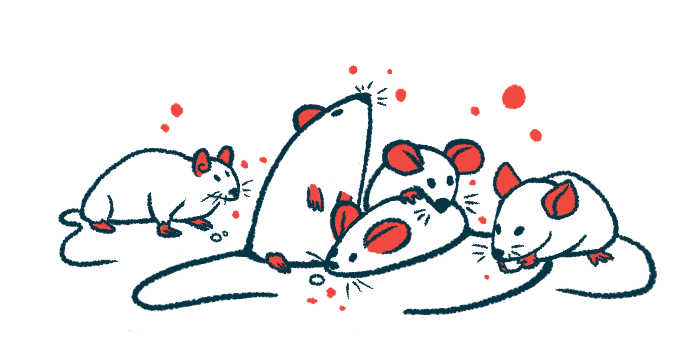ATH434 Preserves Sense of Smell, Aids Neurons in Mouse Model
Oral therapy against iron reactivity showing potential to be neuroprotective

ATH434, Alterity Therapeutics’ experimental oral therapy, prevented a loss in the sense of smell — an early and common symptom of Parkinson’s disease — in a mouse model, and helped to preserve nerve cells and restore motor skills in older animals, a study showed.
These findings add to those of previous work in other mouse models, which also supported the therapy’s ability to ease certain gastrointestinal symptoms of Parkinson’s.
“This publication provides further evidence that ATH434 has the potential to be neuroprotective in humans,” David Stamler, MD, the CEO of Alterity, which was not directly involved in the study, said in a company press release.
Hyposmia, a poorer sense of smell, often precedes motor symptoms
The study, “ATH434 Rescues Pre-motor Hyposmia in a Mouse Model of Parkinsonism,” was published in Neurotherapeutics.
The efficacy shown “in yet another model of Parkinson’s disease adds to the weight of evidence supporting the potential of ATH434 to address the underlying [mechanisms] of Parkinson’s disease and related disorders,” Stamler added.
ATH434, formerly called PBT434, is a brain-penetrant small molecule that can bind to iron and dampen its reactivity. Iron is thought to contribute to the formation of toxic clumps of the alpha-synuclein protein, which are thought to drive neurodegeneration in Parkinson’s.
Previous studies in multiple Parkinson’s mouse models showed the treatment normalized iron levels in the brain, blocked the formation of alpha-synuclein aggregates, prevented nerve cell death, and eased motor impairments.
Scientists in Australia now tested the effects of ATH434 in mice engineered to lack the tau protein. These mice develop early hyposmia — a reduced ability to smell — followed by motor symptoms.
This has been proposed as a model for Parkinson’s, which is often marked by hyposmia in the early disease stages, commonly before motor symptoms develop.
In an initial set of experiments, 5.5-month old mice, before hyposmia onset, were given ATH343 or an inactive solution daily for six weeks.
The mice’s smelling ability then was tested by giving the animals two visually identical objects, with one having an interesting smell. Mice with an intact sense of smell will spend more time investigating the smelly object, while mice with hyposmia will split their time between both objects evenly.
Untreated tau-deficient mice showed no preference for the smelly object, indicating hyposmia, while mice treated with ATH434 showed a strong preference for the smelly object, suggesting a preserved sense of smell.
“As far as we are aware, the data reported here are the first demonstration of pharmacological restoration of pre-motor parkinsonian hyposmia [in living animals],” the researchers wrote.
Analyses of the mice’s brains — specifically the olfactory bulb, which is the region mainly responsible for processing smells — showed that tau-deficient mice had elevated levels of iron and copper. ATH434 treatment reduced levels of these metals, as well as the amount of alpha-synuclein protein.
These findings suggest altered metal accumulation playing a role in the smell-related problems reported before hallmark Parkinson’s symptoms appear, the disease’s so-called “prodromal” period. The researchers noted that little is known about how metals affect smell-related functions, highlighting a need for future research.
“Olfactory testing may be a useful readout to be incorporated into clinical trials with metal modulating agents, and ATH434 may have therapeutic potential in prodromal [Parkinson’s disease],” the team wrote.
Treated older mice show significant gains in motor function
In subsequent experiments, the scientists tested ATH434 in older (13.5 months old) tau-deficient mice, just before the onset of motor symptoms. Compared with mice given an inactive solution, those treated with ATH434 performed significantly better on measures of motor function, such as the rotarod tests where animals have to balance on a spinning rod.
Untreated older mice also showed higher iron levels and marked nerve cell loss in the substantia nigra, a region of the brain heavily affected in Parkinson’s. These deficits were rescued by ATH434, indicating that the treatment prevents motor impairments by normalizing iron levels and protecting nerve cells from death.
Alterity has reported evaluating ATH434 in Phase 1 trials, where it was shown to be generally well tolerated and to achieve levels in the brain similar to those reported to be effective in animal models.
The therapy is currently being tested in an international Phase 2 trial (NCT05109091) involving people with multiple system atrophy, a form of atypical parkinsonism that is also associated with accumulation of toxic alpha-synuclein clumps.







